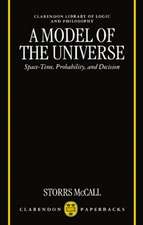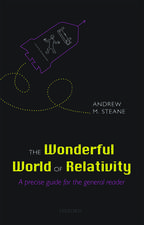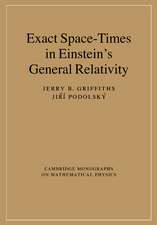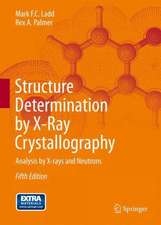Genotoxic Effects of Airborne Agents: Environmental Science Research, cartea 25
Autor Raymond R. Tice, Daniel L. Costa, Karen M. Schaichen Limba Engleză Paperback – 12 oct 2011
Din seria Environmental Science Research
-
 Preț: 405.28 lei
Preț: 405.28 lei - 15%
 Preț: 583.75 lei
Preț: 583.75 lei -
 Preț: 413.76 lei
Preț: 413.76 lei -
 Preț: 386.81 lei
Preț: 386.81 lei -
 Preț: 391.61 lei
Preț: 391.61 lei -
 Preț: 403.53 lei
Preț: 403.53 lei -
 Preț: 398.74 lei
Preț: 398.74 lei -
 Preț: 405.06 lei
Preț: 405.06 lei -
 Preț: 397.59 lei
Preț: 397.59 lei -
 Preț: 410.66 lei
Preț: 410.66 lei -
 Preț: 410.88 lei
Preț: 410.88 lei -
 Preț: 391.02 lei
Preț: 391.02 lei - 15%
 Preț: 656.25 lei
Preț: 656.25 lei - 18%
 Preț: 1253.54 lei
Preț: 1253.54 lei - 15%
 Preț: 602.40 lei
Preț: 602.40 lei - 5%
 Preț: 387.58 lei
Preț: 387.58 lei -
 Preț: 409.89 lei
Preț: 409.89 lei -
 Preț: 406.80 lei
Preț: 406.80 lei -
 Preț: 426.06 lei
Preț: 426.06 lei -
 Preț: 405.53 lei
Preț: 405.53 lei -
 Preț: 394.29 lei
Preț: 394.29 lei -
 Preț: 406.05 lei
Preț: 406.05 lei -
 Preț: 403.15 lei
Preț: 403.15 lei -
 Preț: 409.13 lei
Preț: 409.13 lei -
 Preț: 433.36 lei
Preț: 433.36 lei -
 Preț: 399.50 lei
Preț: 399.50 lei - 15%
 Preț: 592.07 lei
Preț: 592.07 lei -
 Preț: 391.02 lei
Preț: 391.02 lei -
 Preț: 395.85 lei
Preț: 395.85 lei - 5%
 Preț: 1106.33 lei
Preț: 1106.33 lei -
 Preț: 391.79 lei
Preț: 391.79 lei - 5%
 Preț: 378.97 lei
Preț: 378.97 lei -
 Preț: 395.09 lei
Preț: 395.09 lei - 15%
 Preț: 670.82 lei
Preț: 670.82 lei -
 Preț: 395.85 lei
Preț: 395.85 lei - 5%
 Preț: 720.31 lei
Preț: 720.31 lei -
 Preț: 452.04 lei
Preț: 452.04 lei - 18%
 Preț: 1834.77 lei
Preț: 1834.77 lei -
 Preț: 399.50 lei
Preț: 399.50 lei - 18%
 Preț: 953.20 lei
Preț: 953.20 lei - 15%
 Preț: 664.61 lei
Preț: 664.61 lei - 18%
 Preț: 951.77 lei
Preț: 951.77 lei -
 Preț: 389.31 lei
Preț: 389.31 lei - 18%
 Preț: 947.98 lei
Preț: 947.98 lei
Preț: 415.29 lei
Nou
Puncte Express: 623
Preț estimativ în valută:
79.49€ • 82.67$ • 66.61£
79.49€ • 82.67$ • 66.61£
Carte tipărită la comandă
Livrare economică 13-27 martie
Preluare comenzi: 021 569.72.76
Specificații
ISBN-13: 9781461334576
ISBN-10: 1461334578
Pagini: 676
Ilustrații: 658 p.
Dimensiuni: 170 x 244 x 35 mm
Greutate: 1.06 kg
Ediția:Softcover reprint of the original 1st ed. 1982
Editura: Springer Us
Colecția Springer
Seria Environmental Science Research
Locul publicării:New York, NY, United States
ISBN-10: 1461334578
Pagini: 676
Ilustrații: 658 p.
Dimensiuni: 170 x 244 x 35 mm
Greutate: 1.06 kg
Ediția:Softcover reprint of the original 1st ed. 1982
Editura: Springer Us
Colecția Springer
Seria Environmental Science Research
Locul publicării:New York, NY, United States
Public țintă
ResearchCuprins
Section A: Assay and Exposure Technology.- Session I: Assay and Exposure Technology of In Vitro Microbial Assay Systems Applied to Airborne Agents.- An Exposure System for Quantitative Measurements of the Microbial Mutagenicity of Volatile Liquids.- Review of Fractionation and Bioassay Characterization Techniques for the Evaluation of Organics Associated with Ambient Air Particles.- Airborne Particle Collection and Extraction Methods Applicable to Genetic Bioassays.- Session II: Assay and Exposure Technology of In Vitro Mammalian Cell Systems Applied to Airborne Agents.- In Vitro Analysis of Mammalian Cells Exposed In Vitro and In Vivo to Airborne Agents.- Methods for Detecting Gaseous and Volatile Carcinogens Using Cell Transformation Assays.- CHO/HGPRT Mutation Assay: Evaluation of Gases and Volatile Liquids.- Lung Cells Grown on Cellulose Membrane Filters as an In Vitro Model of the Respiratory Epithelium.- Session III: Plant Bioassays for the Detection of Airborne Genotoxic Agents.- Monitoring Ambient Air for Mutagenicity Using the Higher Plant Tradescantia.- Environmental Clastogens Detected By Meiotic Pollen Mother Cells.- Plant Genetic Systems with Potential for the Detection of Atmospheric Mutagens.- Session IV: Animal Exposure Technology for the Detection of Genotoxic Agents.- Systems for Exposure of Animals to Airborne Agents.- Techniques for the Generation and Monitoring of Vapors.- Problems Associated with Assessing the Mutagenicity of Inhalable Particulate Matter.- Section B: Airborne Agents.- Session V: Benzene.- An Overview of the Problem of Benzene Toxicity and Some Recent Data on the relationship of Benzene Metabolism to Benzene Toxicity.- Benzene Metabolites: Evidence for an Epigenetic Mechanism of Toxicity.- Cytogenetic Effects of Inhaled Benzene in Murine Bone Marrow.- Benzene Leukemogenesis.- Session VI: Organic Halides C. Maltoni Moderator.- Genetic Effects of Ethylene Dibromide in Drosophila Melanogaster.- Mutagenic and Oncogenic Effects of Chloromethanes, Chloroethanes and Halogenated Analogues of Vinyl Chloride.- Vinyl Chloride: A Model Carcinogen for Risk Assessment.- Session VII: Miscellaneous Agents.- Inhalation Anesthetics.- Mutagenic and Carcinogenic Effects of Formaldehyde.- The Microbial Mutagenicity of Nitroarenes.- Mutagenic Effects in Human and Mouse Cells by a Nitropyrene.- Genotoxic Properties of Radon and Its Daughters.- Multiple Tissue Comparisons of Sister Chromatid Exchanges Induced by Inhaled Styrene.- An Overview of Ethyl Carbamate (Urethane) and Its Genotoxic Activity.- Section C: Monitoring and Risk Assessment.- Session VIII: Monitoring of Human Populations At Risk.- Cytogenetic Monitoring of Human Populations.- Thioguanine Resistent Lymphocytes As Indicators of Somatic Cell Mutation in Man.- Detection of Point Mutations in Mammalian Sperm.- Session IX: Extrapolation of Genotoxic Data To Human Health Effects.- Extrapolation of Laboratory Data to Human Health Effects.- Molecular Dosimetry as a Bridge Between Mammalian and Non-Mammalian Test Systems.- Is Radiation an Appropriate Model for Chemical Mutagenesis and Carcinogenesis?.- Session X: Regulatory Risk Assessment.- Impact of Energy and Pollution on Public Health.- Policy and Procedures for Using Mutagenicity Data in Assessing Genetic Risk.- The Sensitivity of Method Procedure as a Regulatory Mechanism for Approval of Carcinogens.- Contributed Papers.- The Human Genetic Risk of Airborne Genotoxics: An Approach Based on Electrophoretic Techniques Applied to Mice.- Photon-Emitting Microorganisms as Test Objects for Detecting Genotoxic Agents.- Detection of Genotoxic Airborne Chemicals in Rat Liver Culture Systems.- The Induction of Sister Chromatid Exchange in Human Lymphocytes and Bacterial Mutagenesis by Organic Extracts of Urban Airborne Particles.- An epidemiological Study of Cancer Deaths in Pathfor, Kentucky.- List of Participants.- Agent Index.














